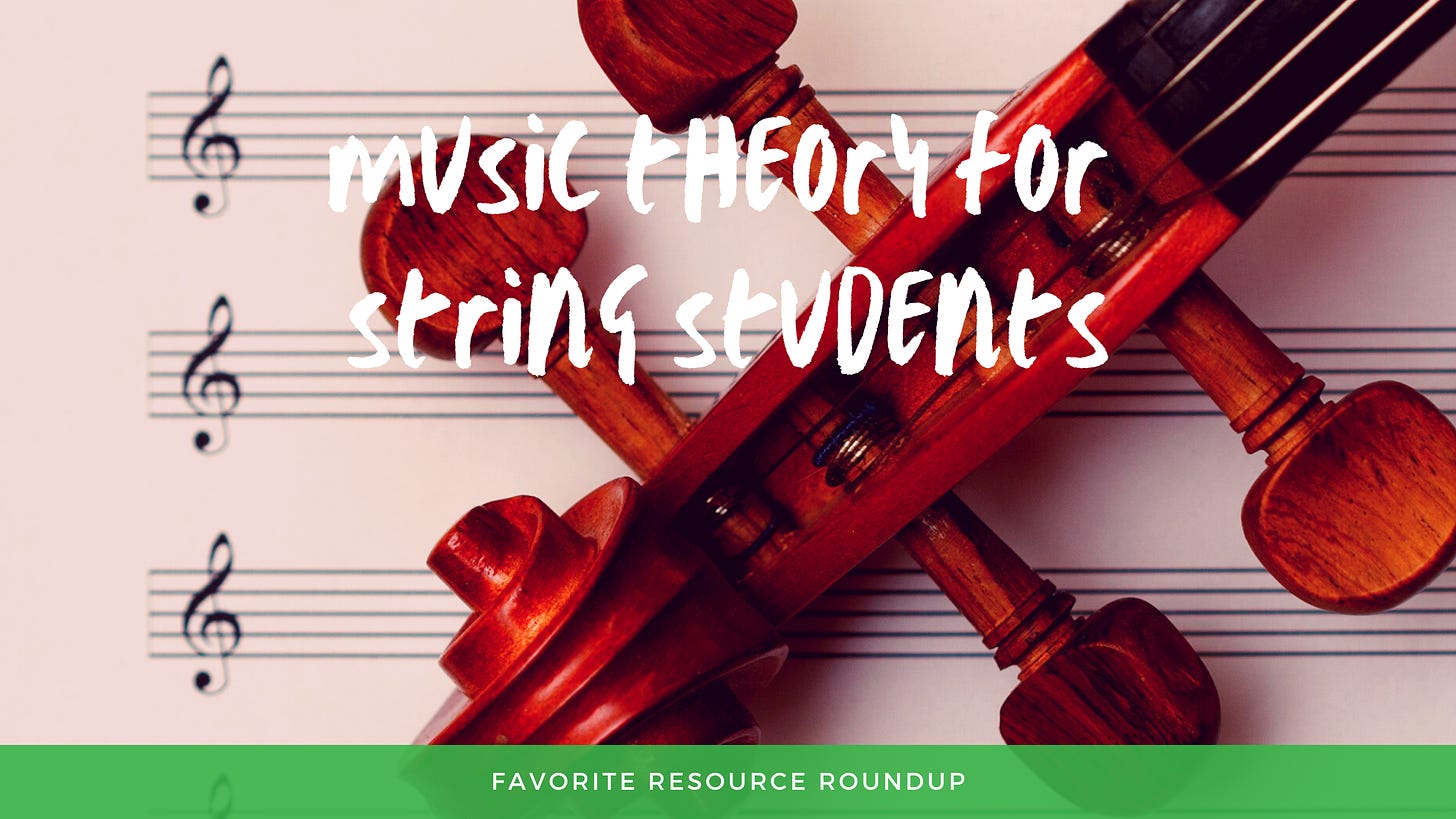Teaching music theory makes musicians who can speak the language of music and read and write it as well. Music theory is a core section of all my music lessons, and learning (and teaching!) it does not have to be dull, dry, and academic. Here are some fun ways I integrate music theory in my lessons for students of all ages.
Young Beginners
Ready to Read by Tanya Lesinsky Carey is a fantastic resource of 100 games that teach pitch, rhythm, musical signs, terms and symbols, notation, and improvisation. The book includes all game materials, including flashcards, game boards, and worksheets. I love that it contains a systematic lesson plan that breaks the material down into two fifteen-lesson semesters. My young students spend about one-third of their lesson time on these games and activities, and they love them! They often ask to replay their favorite games. Not only does this resource teach basic music theory, but it also prepares students to read music on the staff and teaches the geography of the fingerboard.
Just the Facts
My students aged six and older start using the Just the Facts for Strings series right from their first lesson. Younger students begin in the blue Primer book, and older students start in the yellow Book 1. I like the clean layout of this book and how it reinforces rhythm, note reading, and the notes on the fingerboard in each lesson. It introduces scales and expressive markings in a logical approach that goes well with the Suzuki method or a string method like Essential Elements or All for Strings. Many of my students aim to take the Texas Music Teachers' Association theory exam, so I love how Just the Facts includes ear training exercises in each lesson. Book 3 of the series introduces the piano keyboard and bass clef so that upon completion, students are ready to go into at least Level 6 of our state music theory syllabus.
Theory Time
I often teach middle and high school students who want extra coaching on their school orchestra or mariachi music. I use the Theory Time medallion series with this group of pupils. The first level, Bronze, covers Levels 1-3 of our state music theory syllabus, so many of my older students begin taking the theory exam their first year of lessons with me. Having the extra knowledge of different clefs, the piano keyboard, and intervals and chords makes them valuable members of their school ensembles. Ear training activities sharpen their listening and intonation skills.
The Theory Time series now includes a video teaching course for each level that available for purchase separately or in combination with the book. The video series helps me in my 20-20-20 classes or sibling lessons. One student can be doing their theory work on the iPad with headphones, while another student gets one-on-one time with me.
Another similar tool is the music theory course from Piano Program. It is a complete video teaching series with access to a printable workbook, plus interactive exercises from musictheory.net and Quizlet. By "flipping" my lesson studio and having students guide their learning on their own by watching videos and doing self-directed activities, my students become excellent sight-readers and better all-around musicians.
Games!
While lots of writing practice and drills can sharpen students' music theory skills, including games in their learning is a sure-fire way to improve knowledge retention (and student retention!). "Game time" is a time-honored tradition in my studio. In group classes, we play board games, bingo games, and even online games. I have seen my student's reading skills and performance on the state exams skyrocket since implementing game time.
I also subscribe to Piano Game Club, which, as the name implies, sends teachers four printable piano games each month on a variety of music theory and aural skills topics. Almost every single board game gets played by my string students as well. Getting new games every month keeps my lessons exciting and makes my students look forward to each class.
How do you fit it all in??
Some teachers worry that playing games or spending time on theory will take time away from repertoire or technique studies. It is all in finding balance and remembering that studying music theory will enhance students' overall musicality and improve their sight-reading, performance skills, and even technique. Here is my typical 30-minute private lesson break-down. For an hour-long group class, I double the amount of time spent on each area:
5 minutes: Tuning/Warm-Ups
10 minutes: Repertoire/Method Book
10 minutes: Theory Game or Workbook
5 minutes: Sight Reading or Note Reading Drill/Game
To start including music theory and game time in your lessons will require a bit more prep time, but having a lot of exciting material to cover in a class makes it fast-paced and exciting. You'll find you'll cut a lot of "fluff" and focus on teaching new concepts that students can apply at home as they practice on their own, and spend your lesson time perfecting well-practiced material and learning new things.
Creating complete musicians is highly gratifying! They will be the ones who can take on gigs at the drop of a hat and excel as ensemble members and performers. Pulling together all the bits and pieces that make a holistic musician can be challenging, but the rewards pay out dividends.
What are some games and resources you like to teach theory and music reading concepts to your students? Drop your thoughts in the comments below, or join us on social media to continue the conversation.




